 General Information
General InformationGreen Roofs
Rainwater Harvesting
Ponds and Wetlands
Systems
Liners
Rubber Liners
Installation
Seams
Repairs
Coatings
Protection Fabrics
Filters
Pumps
Plumbing
Fountains
Water Quality
Other Products
Documents
Energy-Efficient Building
Waterproofing

INSTALLING A RUBBER POND LINER
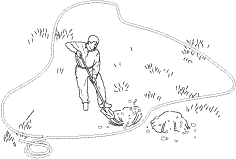
Outline the perimeter of the pond with a rope, garden hose, wood stakes, or spray paint. Measure the width W at the widest point, the length L at the longest point, and the maximum depth D. Order a pond liner with at least W+2D+2 feet wide by L+2D+2 feet long. If the pond is very irregular, increase these measurements by a few feet.
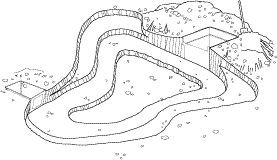
Excavate the pond and install in-ground components such as skimmers, waterfall filters, and bottom drains. Most garden ponds are designed as a series of terraces with a maximum depth of 24" to 30" deep, but we suggest you consult your plant and fish suppliers for specific recommendations for your climate. If the site is flat, the soil removed can be used to create a hill for a waterfall.
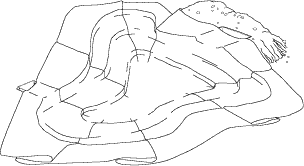
To protect the liner from stones and other soil debris, we recommend a base of sand or fine soil covered with PondTechnology Liner Protection Fabric. The fabric should be overlapped and folded as required to completely cover the bottom and sides of the excavation and should extend onto the ground surface. When preparation is complete, carefully unfold and position the rubber liner. Don't stretch the rubber: just let it wrinkle and pleat naturally to fit the contours of the pond.
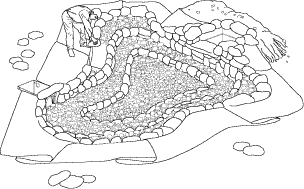
Begin to lay rounded river rocks and gravel. Since stretching will shorten the life of a rubber liner, always start at the bottom and work upward, allowing the liner to slip freely into the pond. Before placing rocks at a transition point such as the edge of a terrace, always make sure to leave sufficient rubber to fill the contours of the pond under the weight of water.
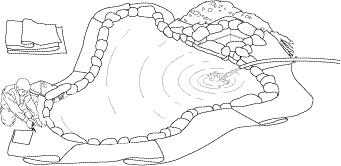
Fill the pond with water. Then trim both the liner and protection fabric with a sharp scissors. Prevent runs in the rubber by cutting gentle curves. Leave a 12" margin of rubber, fold it several times, and bury it at the pond edge so there will be extra material available should the perimeter settle.
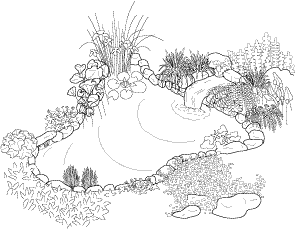
For a natural look, apply topsoil and mulch around the pond so that the perimeter rocks just barely protrude from the ground surface and then plant heavily at the pond edge to further conceal the rocks. For optimal durability, the liner should be totally protected by rocks and water, and the water level must be maintained in hot dry weather.
Rubber liners normally require no maintenance and are unaffected by weather. We recommend that ponds not be drained in the winter since ice will not damage the liner.